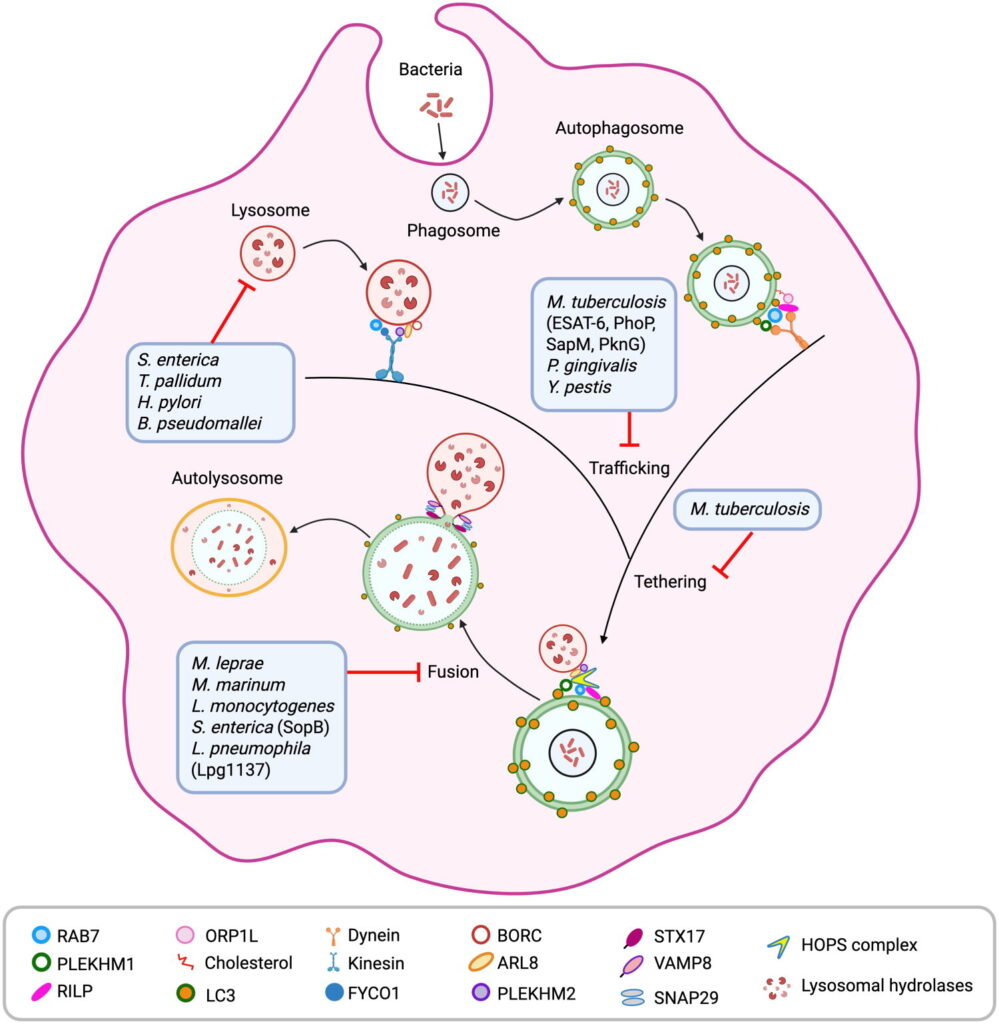The final gate: bacterial subversion of autophagosome-lysosome fusion as a conserved immune evasion strategy

Autophagy is a key defense system inside our cells. It works by trapping invading germs in a bubble-like structure (autophagosome) and then fusing it with a lysosome, which breaks down the germs. While researchers have long focused on how these bubbles form, new evidence shows that the final fusion step is actually a weak point that many bacteria exploit to survive. This review summarizes findings from several disease-causing bacteria, including Mycobacterium tuberculosis, Salmonella, Treponema pallidum, Helicobacter pylori, Coxiella burnetii, Yersinia pestis, and Porphyromonas gingivalis. These bacteria have evolved similar strategies to block the fusion step and avoid being destroyed. They do this by: (i) disrupting key proteins that guide fusion, (ii) interfering with the fusion machinery, and (iii) altering how lysosomes are made or positioned. By targeting this step, bacteria can hide and survive inside cells. Understanding these tricks helps researchers design treatments that restore normal autophagy and boost the body’s defenses.
Corresponding author: Marisa Ponpuak
First-author: Israt Chowdhury

